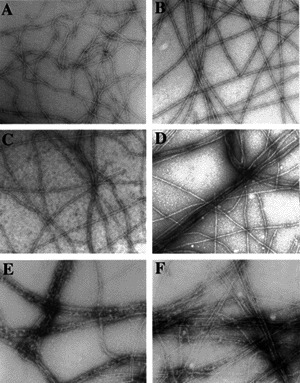From: The Salmonella battle plan

NCBI Bookshelf. A service of the National Library of Medicine, National Institutes of Health.

The figure shows an electron micrograph of the effect of Salmonella typhinurium SipA on the bundling activity of T-plastin.
A and B show actin with no T-plastin present; C and D show actin with low levels of T-plastin (0.125 micromolar), and E and F have a high level of T-plastin present (0.5 micromolar).
A, C and E have no SipA present, whereas B, D and F have SipA present as 2.0 micromoles.
The effect of SipA on actin bundling is especially clear in the pair C and D, where the concentration of T-plastin alone (C) is not sufficient to induce actin bundling. On addition of SipA (D), bundling occurs.
(Figure reproduced from Zhou, D., Mooseker, M.S. and Galan, J.E. (1999) An invasion-associated Salmonella protein modulates the actin-bundling activity of plastin Proc. Natl Acad. Sci. USA 96, 10176-10181 [PubMed]).
From: The Salmonella battle plan

NCBI Bookshelf. A service of the National Library of Medicine, National Institutes of Health.